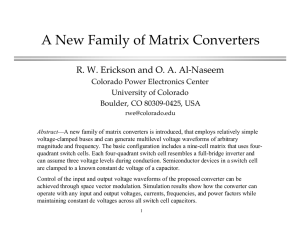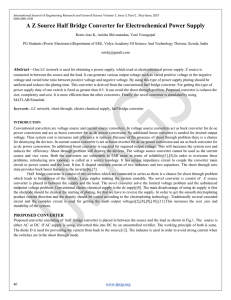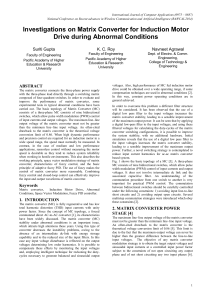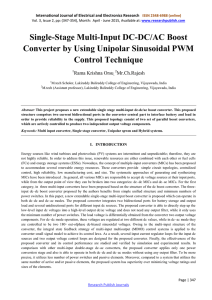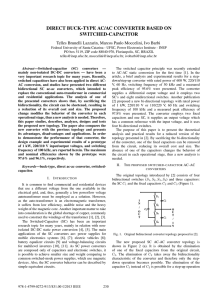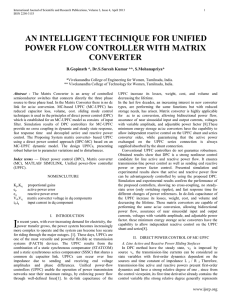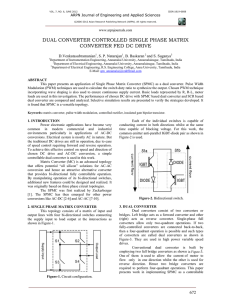DVF4: A Dual Vth Feedback Type 4-Transistor
advertisement
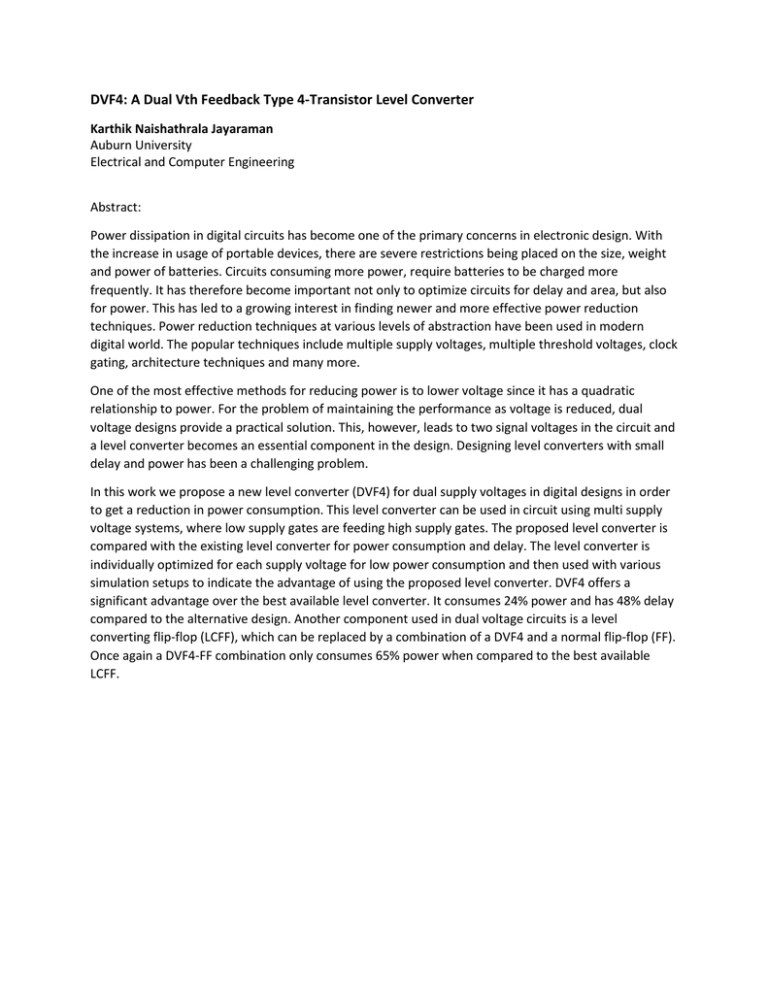
DVF4: A Dual Vth Feedback Type 4-Transistor Level Converter Karthik Naishathrala Jayaraman Auburn University Electrical and Computer Engineering Abstract: Power dissipation in digital circuits has become one of the primary concerns in electronic design. With the increase in usage of portable devices, there are severe restrictions being placed on the size, weight and power of batteries. Circuits consuming more power, require batteries to be charged more frequently. It has therefore become important not only to optimize circuits for delay and area, but also for power. This has led to a growing interest in finding newer and more effective power reduction techniques. Power reduction techniques at various levels of abstraction have been used in modern digital world. The popular techniques include multiple supply voltages, multiple threshold voltages, clock gating, architecture techniques and many more. One of the most effective methods for reducing power is to lower voltage since it has a quadratic relationship to power. For the problem of maintaining the performance as voltage is reduced, dual voltage designs provide a practical solution. This, however, leads to two signal voltages in the circuit and a level converter becomes an essential component in the design. Designing level converters with small delay and power has been a challenging problem. In this work we propose a new level converter (DVF4) for dual supply voltages in digital designs in order to get a reduction in power consumption. This level converter can be used in circuit using multi supply voltage systems, where low supply gates are feeding high supply gates. The proposed level converter is compared with the existing level converter for power consumption and delay. The level converter is individually optimized for each supply voltage for low power consumption and then used with various simulation setups to indicate the advantage of using the proposed level converter. DVF4 offers a significant advantage over the best available level converter. It consumes 24% power and has 48% delay compared to the alternative design. Another component used in dual voltage circuits is a level converting flip-flop (LCFF), which can be replaced by a combination of a DVF4 and a normal flip-flop (FF). Once again a DVF4-FF combination only consumes 65% power when compared to the best available LCFF.



